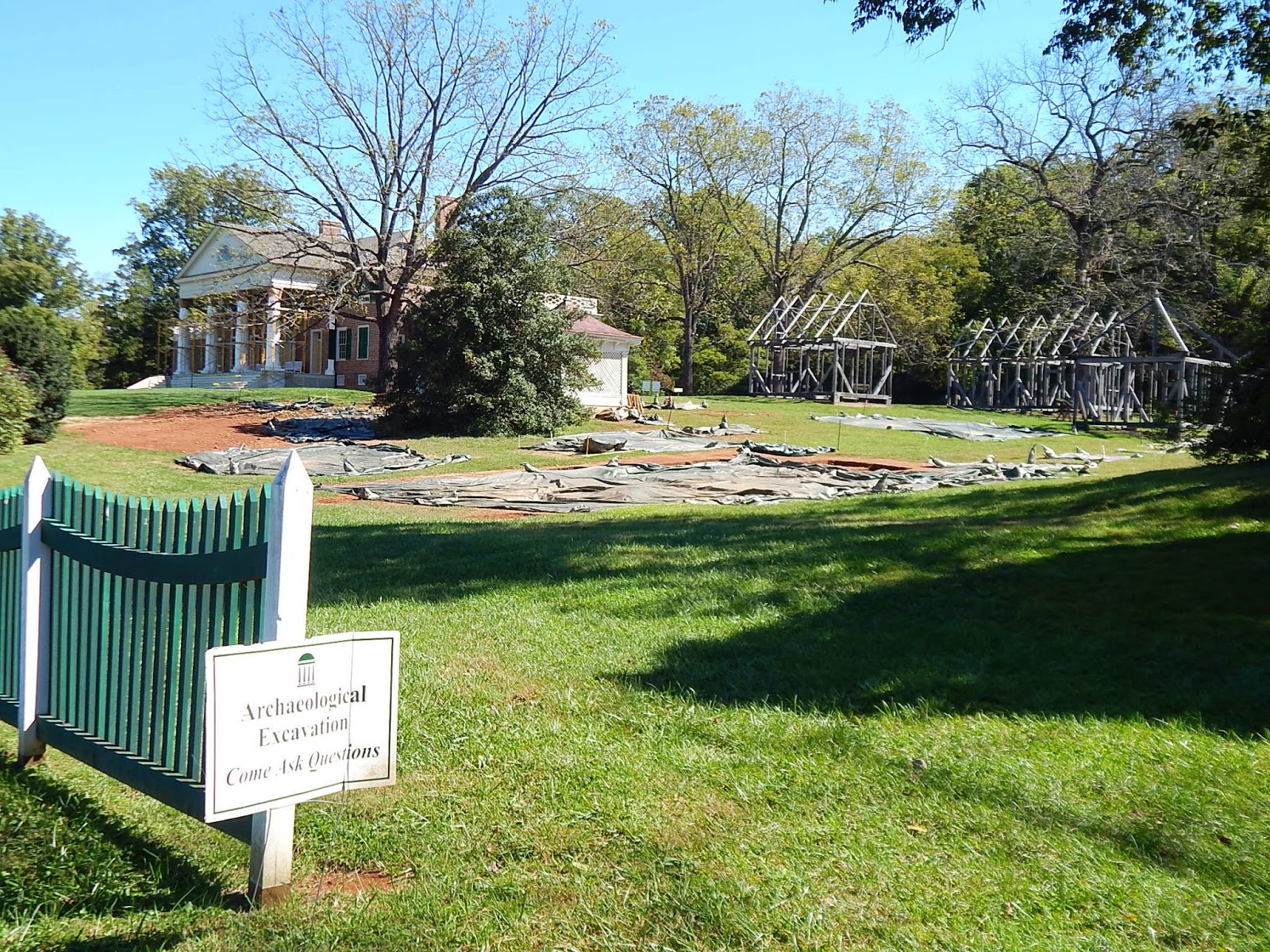Gordonsville, Virginia High 63 Low 43
Last night it got really cold, 34 degrees. Today with the
breeze it felt cold.
She was cold!
We went to Montpelier, the home of James and Dolley Madison.
In 1723, James Madison's
grandfather, Ambrose Madison, and his brother-in-law, Thomas
Chew, received a patent for 4,675 acres of land in the Piedmont of Virginia. Ambrose, his wife
Frances Madison, and their three children moved to the plantation in 1732, naming it Mount Pleasant.
(Archaeologists have located this first site near the Madison Family Cemetery.)
Ambrose died six months later; according to court records, he was poisoned by
three enslaved
blacks. At the time, Ambrose Madison held 29 slaves and close to 4,000 acres.
After his death, Frances managed the estate
with the help of their son, Colonel James Madison, Sr. Phase 2 (1797–1800) of construction began in 1797, after the
son James
Madison returned to Montpelier with his new wife Dolley
Madison. He was then 39 and she was a young widow with a child. At this
time Madison added a thirty-foot extension and a Tuscan
portico
to the house. Next, he directed construction of single-story flat-roofed
extensions at either end of the house; these provided space for the separate
household of the newlyweds James and Dolley Madison. Madison's widowed mother
Frances still resided in the house following the death of her husband, James,
Sr., in 1801.
James Madison,
Jr. (March 16, 1751 –
June 28, 1836) was an American statesman, political theorist and the fourth President of the United States
(1809–1817). He is hailed as the "Father of the Constitution" for
being instrumental in the drafting of the United States Constitution and as the
key champion and author of the United States Bill of Rights. He
served as a politician much of his adult life.
The house was
sold by Dolley Madison in 1844 and was owned by 6 additional owners until
bought by the DuPont’s in 1901. After some renovations in the later 19th
century (c. 1855 and c. 1880), the house was acquired in 1901 by William and Annie Rogers
duPont, of the DuPont family. A horse enthusiast, William duPont
built barns, stables, and other buildings for equestrian
use. The DuPonts were among several wealthy families in the Upper South who
were influential in the development of Thoroughbred horse racing in the United
States.
The race track is
still there and looked to be in good condition.
We even found a horse grave yard. There are three headstones similar to this one.
We weren't
allowed to take pictures inside the home, but got lots of pictures outside and
in the garden. It was an interesting tour. The home is still going through
renovations and furnishing.
 |
| There were cooking demonstrations. |
They are in the process of rebuilding the slave quarters.
The gardens have lots of paved walks and statues.
Tomorrow we leave
for Virginia Beach with a detour which I will talk about tomorrow.
Thanks for
visiting.
























I've never understood why you can't take photos.
ReplyDeleteA great tour even without the pictures. I also wish we could take pictures but a lot of places won't let you.
ReplyDelete